Mexico missing students: Bone fragments identified
- Published

The case has sparked protests in Mexico about state complicity in organised crime
Forensic experts have identified the remains of a student who disappeared along with 42 other trainee teachers in the western Mexican state of Guerrero in 2014.
The attorney-general's office said the bone fragments were those of Christian Alfonso Rodríguez Telumbre.
He is only the second member of the group to be officially listed as dead.
The disappearance of the 43 triggered demonstrations against impunity and state complicity with organised crime.
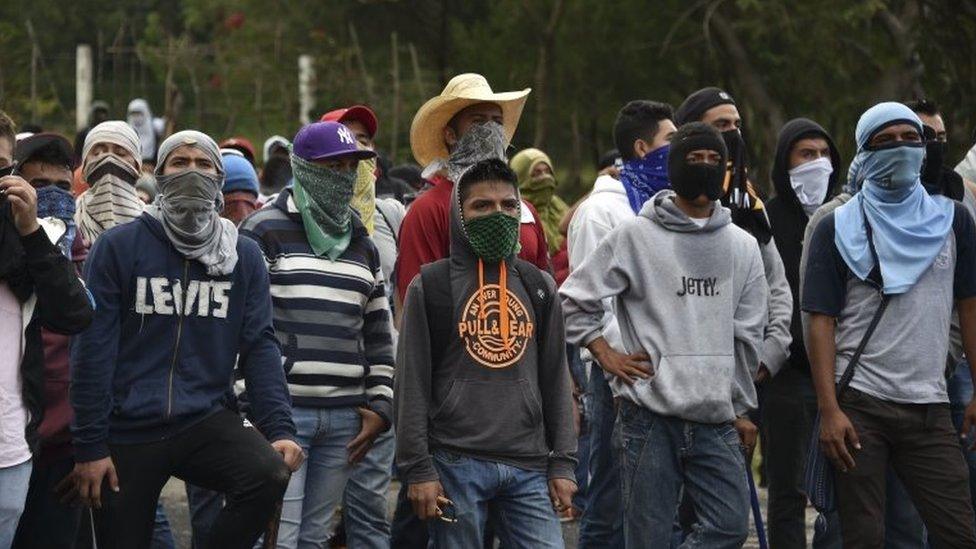
The case caused widespread anger in Mexico and triggered protests
A government report released shortly after they went missing said the students were killed by the criminal gang Guerreros Unidos (United Warriors), which mistook them for members of a rival group.
But subsequent independent investigations have cast doubts on the official report's findings, and the results from these latest tests further raise suspicion about the original probe.
What is the case about?
The case dates back to 26 September 2014 when the 43 students disappeared after attending a protest in the town of Iguala in the state of Guerrero.
As they were travelling back to their teacher training college in nearby Ayotzinapa, they were confronted by municipal police who opened fire on the buses they were travelling in.
The officers maintained they had done so because the buses had been hijacked by the students, but the surviving students said the drivers had agreed to give them a lift.
Forty-three of the students vanished after the clash.
What did the original investigation uncover?
An official government report published during the presidency of Enrique Peña Nieto said the students had been seized by the municipal police officers who handed them over to the Guerreros Unidos.
The report concluded that the gang had killed the 43, burned their bodies at a rubbish dump in a place called Cocula and thrown their ashes into a local stream.
Why were the findings questioned?
As early as 2015, independent investigators from the Inter-American Commission of Human Rights warned that the official investigation was "deeply flawed".
They said that satellite images showed there had been no fire on the night of the students' disappearance.
They also said that because the chain of evidence had been broken, it was not clear whether the charred remains of Alexander Mora, the only student to be positively identified at the time, were found at the rubbish dump or planted there.
The Mexican president, Andrés Manuel López Obrador, is one of those who has been critical of how the official investigation was handled by his predecessor. Last year, he ordered a new investigation, which he said would "start from scratch".
As part of the new probe, investigators carried out fresh searches in the area where the students disappeared.
What did the new investigation reveal?
Omar Gómez, who leads the special unit in the attorney-general's office charged with reinvestigating the case, said the bone fragments had been found in November in a ravine near Cocula, about 800m (half a mile) from the rubbish dump.
They were sent to the University of Innsbruck in Austria for analysis and forensic experts there concluded that they matched the DNA of Christian Alfonso Rodríguez Telumbre.
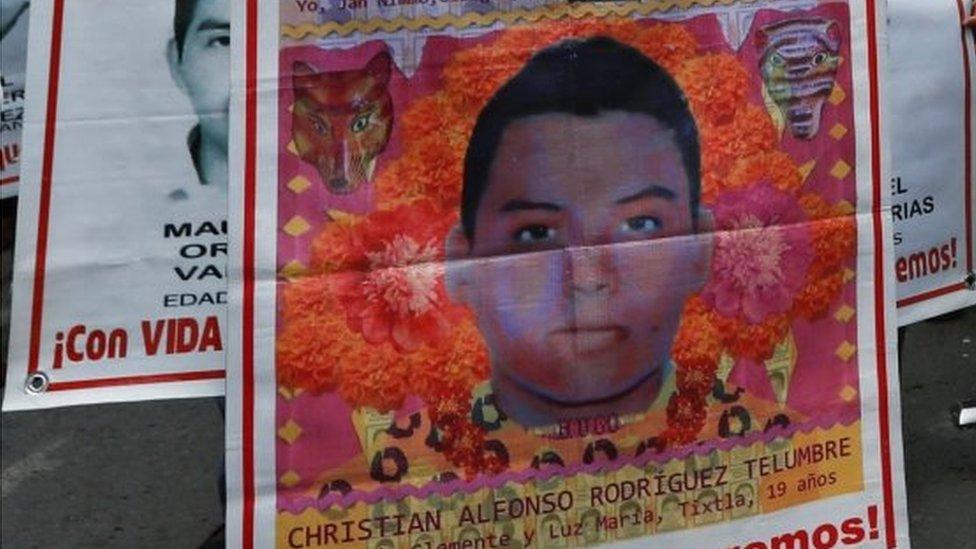
Mr Gómez also said that at the location where the bone fragments were found there was no evidence of a fire, which appears to contradict the original report's version that the students' remains were incinerated.
"It [the bone fragment] was not tossed or found in the Cocula dump, nor in the San Juan River like the previous administration held up publicly and legally," Mr Gómez said. He added that in his opinion the original report had thereby been proven to be false.
What happens next?
Further remains found at the site are expected to be sent for analysis.
The relatives of the students, meanwhile, are demanding that more be done to track down the man who led the original investigation, Tomás Zerón.
Mr Zerón, who is believed to have gone on the run and fled Mexico, has been charged with involvement in the torture of Guerreros Unidos suspects who - under duress - confessed in 2014 to killing and burning the students' bodies.
Some of the relatives believe that the Guerreros Unidos were convenient scapegoats and that Mr Zerón holds key information about what happened to the students.
An Interpol red notice has been issued for his arrest.
- Published13 March 2018
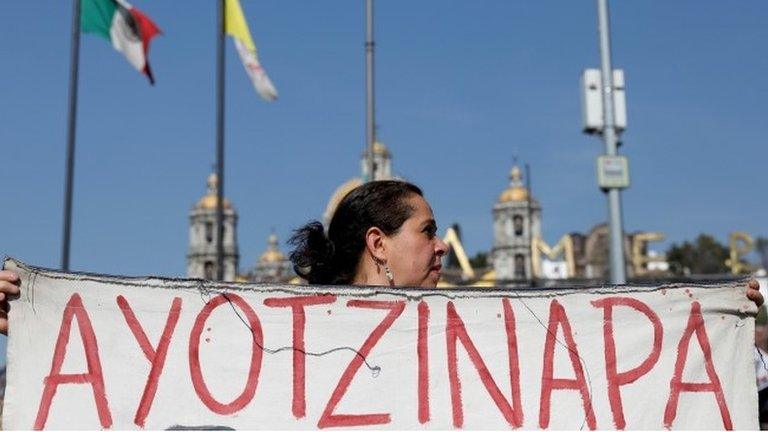
- Published12 April 2019
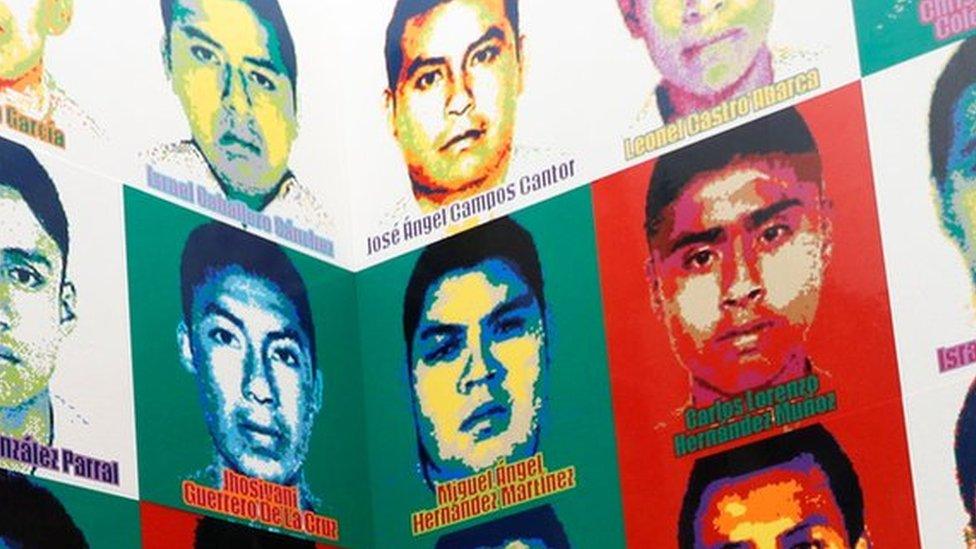
- Published16 September 2019
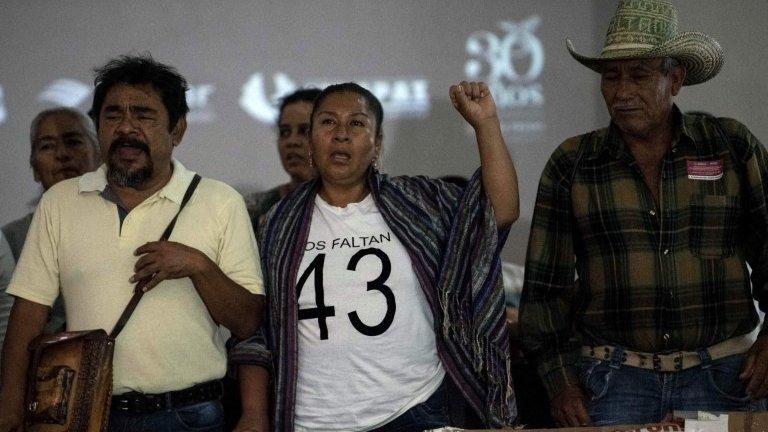
- Published19 September 2019
